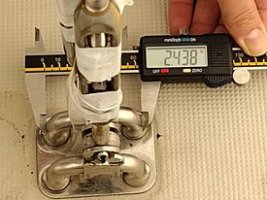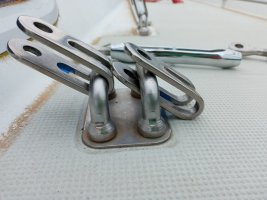The decks were re-corded 4 years ago but the areas around the shrouds and stanchions were not done. This left wet core in these areas. Since I am retired and have the time I thought I would do these areas and the inner jib tracts that were not done.Mark can you see the extent of the wet core from under the side deck? Hopefully it’s a limited area. It might be easier to just add a square of 1/2” G10 to the shroud area in place of the foam core material. No compression or leaking into the core worries then. Good luck with the project.
Springy Side Decks- Reinforce?
I'm in the process of correcting core damage to the side decks, from below. The starboard side is complete, but the port side remains. I'm loathe to remove the galley so I am limiting my repairs to the easily accessible areas, although I suspect the water damage does include the inaccessible...ericsonyachts.org
Any advice from the community is appreciated.


